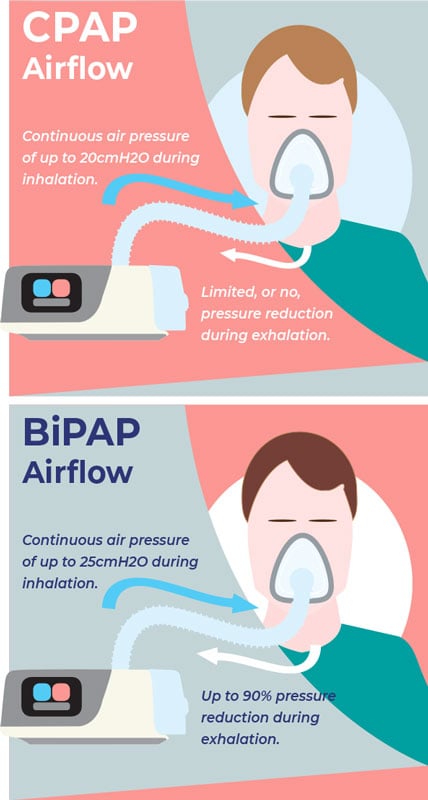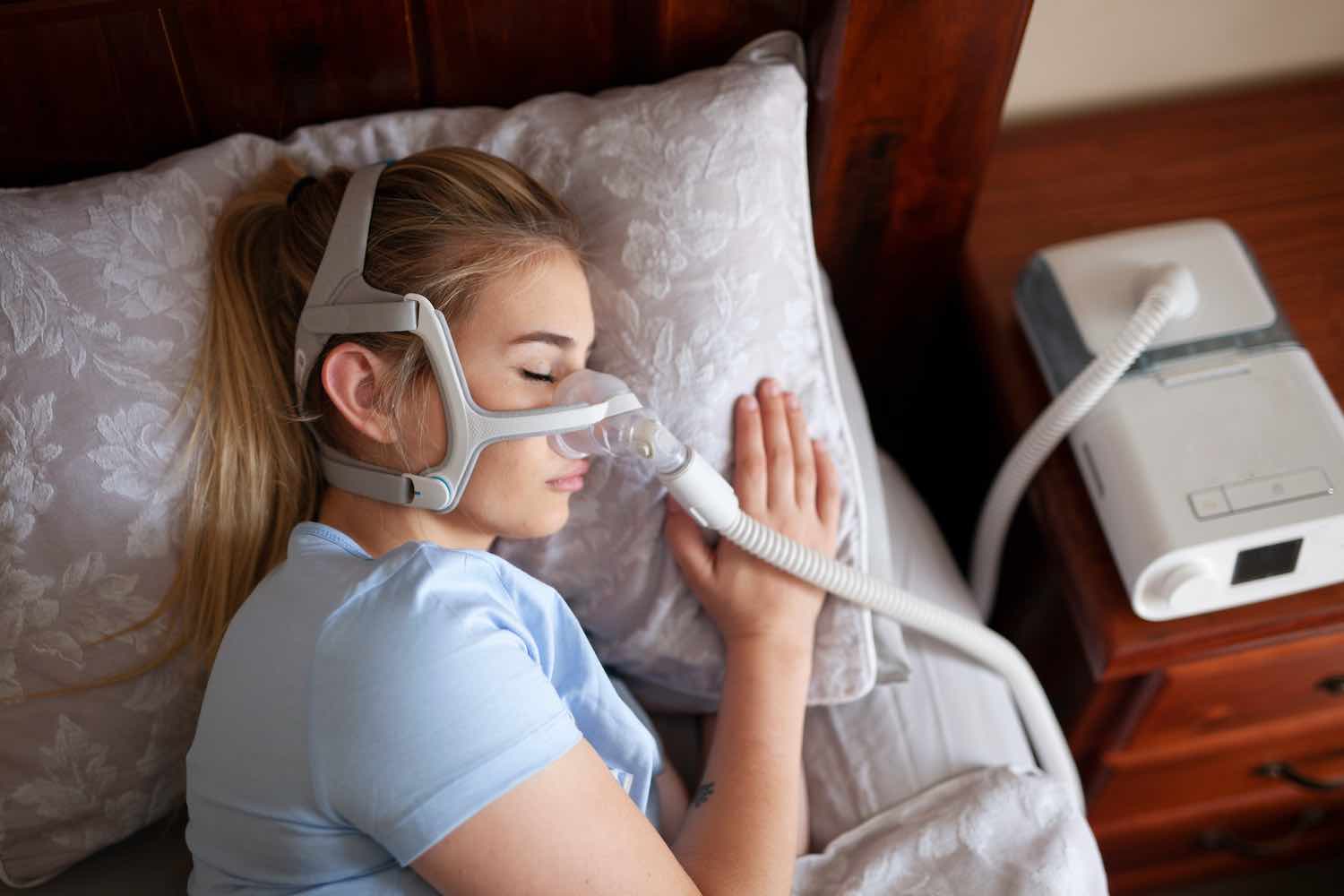BiPAP Rental Solutions for Short-Term Medical Needs
BiPAP Rental Solutions for Short-Term Medical Needs
Blog Article
Bipap vs. CPAP: Which Is the very best for Your Sleep Problem?
When browsing the complexities of rest conditions, the choice in between BiPAP and CPAP therapy is an essential consideration. While CPAP provides a consistent airflow ideal for obstructive sleep apnea, BiPAP's twin pressure setups may boost comfort for those with even more complex respiratory issues.
Understanding Rest Disorders
Rest disorders include a variety of problems that interfere with typical sleep patterns, influencing both the top quality and duration of rest. These disorders can materialize in different kinds, consisting of insomnia, rest apnea, narcolepsy, uneasy leg syndrome, and parasomnias. Each condition provides unique obstacles, usually bring about considerable daytime tiredness, cognitive impairment, and emotional disturbances.
Insomnia is characterized by problem dropping or remaining asleep, while rest apnea entails duplicated disruptions in breathing throughout rest, frequently leading to fragmented rest. Narcolepsy, on the other hand, is noted by too much daytime drowsiness and sudden sleep assaults. Uneasy leg disorder creates uncomfortable sensations in the legs, triggering an unmanageable impulse to relocate them, which can additionally prevent the ability to go to sleep.
The impact of sleep conditions prolongs beyond private wellness, affecting total performance, partnerships, and lifestyle. Recognizing the specific nature of each disorder is crucial for effective diagnosis and treatment. As rest wellness comes to be significantly identified as an essential part of total health, resolving these problems is necessary for enhancing both rest high quality and everyday functioning.
How CPAP Functions
Continuous Favorable Air Passage Stress (CPAP) therapy is often used as a key therapy for obstructive rest apnea (OSA) The mechanism of CPAP includes the use of an equipment that supplies a steady stream of air via a mask worn during sleep. This air movement preserves positive stress in the respiratory tract, stopping the collapse or obstruction of the throat that can take place throughout sleep.
When a person takes a breath in, the CPAP device provides a constant flow of air, ensuring that the air passage remains open - BiPAP Rental. This not just relieves the signs of OSA, such as snoring and disrupted rest patterns, but also minimizes the connected health dangers, including cardio complications and daytime exhaustion
The pressure setups on a CPAP device can be tailored to satisfy specific client needs, usually figured out via a sleep research. Patients normally undergo titration researches to find the ideal stress level for their one-of-a-kind condition. Normal follow-up and modifications might be necessary to make sure performance and comfort. Generally, CPAP treatment has been shown to substantially improve the high quality of rest and general health for people experiencing obstructive sleep apnea.
Exactly How BiPAP Works
BiPAP, or Bilevel Positive Respiratory Tract Stress, is a customized kind of non-invasive ventilation that is specifically useful for individuals with problems such as complex rest apnea or breathing problems. Unlike CPAP, which provides a continuous stream of air at a solitary stress, BiPAP gives two distinctive pressure settings: a greater inspiratory stress for inhalation and a lower expiratory pressure for exhalation. This dual-pressure method permits much easier breathing, decreasing the initiative needed during exhalation.
The gadget runs via a mask fitted over the nose or mouth, connected to a maker that generates atmospheric pressure. When the client breathes in, the machine delivers the higher pressure to aid with air movement, making sure that the air passage remains open. Upon exhalation, the machine immediately minimizes the pressure, making it more comfy for the patient this to breathe out.
:max_bytes(150000):strip_icc()/GettyImages-635878206-25ee9a42856f41cfab94873074580679.jpg)
Trick Distinctions In Between BiPAP and CPAP

On the other hand, BiPAP (Bilevel Positive Respiratory tract Pressure) supplies two various pressure setups: one for inhalation and a lower one for exhalation. This dual pressure system enables more comfortable breathing, particularly for individuals who fight with exhaling versus a continual stress. BiPAP is frequently suggested for clients with complex sleep apnea, chronic obstructive lung condition (COPD), or those who call for added support throughout rest.
Moreover, the intricacy of BiPAP devices generally causes a higher price and requires more cautious titration than CPAP. BiPAP Rental. Recognizing these key differences can aid in identifying which tool might be better for details rest disorders, establishing the foundation for enlightened treatment decisions
Choosing the Right Treatment
The decision in between BiPAP and CPAP therapy largely hinges on the details features of the rest problem, the person's general health, and their comfort with the tool. CPAP, which delivers a continual stream of air, is frequently prescribed for obstructive rest apnea (OSA)
Alternatively, BiPAP provides 2 degrees of stress: one for inhalation and a reduced one for exhalation. This twin stress system is beneficial for people with complicated rest apnea or those who experience trouble breathing out against a continual pressure. Additionally, BiPAP is commonly suggested for people with breathing conditions, such as persistent obstructive lung disease (COPD), where differing pressure setups can enhance comfort and compliance.
Eventually, a complete assessment by a sleep specialist, consisting of a sleep read here research, can assist identify which treatment aligns finest with the person's requirements. Aspects such as convenience, ease of use, and certain medical conditions ought to also be thought about to enhance treatment end results.
Verdict
In summary, both BiPAP and CPAP offer distinct objectives in the monitoring of rest conditions. CPAP is reliable for obstructive rest apnea via constant air movement, while BiPAP supplies double pressure settings that boost you could try these out convenience for those with complicated rest apnea or respiratory concerns. The choice between these therapies should be assisted by specific demands and conditions, requiring an extensive analysis by a sleep professional to make certain ideal treatment outcomes and enhanced high quality of sleep.

Generally, CPAP treatment has actually been shown to substantially improve the high quality of rest and general health for individuals enduring from obstructive rest apnea.
BiPAP is commonly advised for people with intricate rest apnea, chronic obstructive pulmonary illness (COPD), or those that need additional assistance during rest.
CPAP is reliable for obstructive rest apnea via consistent air movement, while BiPAP supplies twin stress settings that improve convenience for those with intricate rest apnea or respiratory system issues.
Report this page